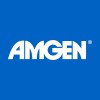
Stereotactic Radiosurgery Followed by Wedge Resection in Treating Patients With Early Stage Peripheral...
Recurrent Non-small Cell Lung CancerStage IA Non-small Cell Lung Cancer1 moreThis pilot clinical trial studies the side effects and how well stereotactic radiosurgery followed by wedge resection works in treating patients with early stage non-small cell lung cancer that is located in the outer, or peripheral, areas of the lung. Stereotactic radiosurgery, also known as stereotactic body radiation therapy, is a specialized radiation therapy that delivers a single, high dose of radiation directly to the tumor and may kill more tumor cells and cause less damage to normal tissue. Wedge resection is a less invasive type of surgery for removal of the tumor and a small amount of normal tissue around it. Giving stereotactic radiosurgery followed by wedge resection may be a safe treatment option for patients who cannot receive standard treatment with lobectomy.

Pembrolizumab-PET Imaging
MelanomaNon-small Cell Lung CancerThis is a two center, single arm, investigator sponsored trial (IST) with the PET tracer 89Zr-pembrolizumab to evaluate in vivo whole body distribution of 89Zr-Pembrolizumab in a registered indication: locally advanced metastatic melanoma or non-small cell lung cancer before Pembrolizumab treatment.

The Impacts of Pulmonary Rehabilitation Therapy on Patients After Thoracic Surgery
Lung NeoplasmsThe advantages of thoracoscopic surgery include smaller wounds, fewer postoperative complications, and shortened hospital stay. However,complications such as pain, pulmonary function insufficiency, pneumonia,postoperative pneumothorax, persistent air leakage, subcutaneous emphysema, cough, and hemoptysis may occur in older patients after thoracoscopic surgery. Pulmonary rehabilitation has been demonstrated by evidence-base medicine could effectively reduce pulmonary complications and dyspnea as well as improve lung function, quality of life, exercise ability, and functional status of patients after traditional heart and thoracic surgery. Studies have suggested that pulmonary rehabilitation should be performed for at least 4 weeks to optimize the training effect .However, most patients who undergo thoracoscopic surgery were discharged within 3-5 days. Such a short hospital stay impeded the delivery of pulmonary rehabilitation. Home-based pulmonary rehabilitation appeared to be an option for these patients The purpose of this study is to determine whether Pulmonary rehabilitation are effective on patients who had thoracic surgeries.

A Study to Evaluate the Good and Bad Effects of BIBF1120 in Small Cell Lung Cancer Patients Who...
Small Cell Lung CancerPlatinum-sensitiveThis study is being done to evaluate the good and bad effects of BIBF1120 in recurrent, platinum-sensitive small cell lung cancer patients and to see if BIBF1120 may or may not be more effective and better tolerated than standard therapy. The purpose of this study is to: Find out the proportion of patients with their small small cell lung cancer controlled for at least 90 days after treatment with BIBF1120 Compare the response rate, survival and side effects of BIBF1120 in recurrent, platinum-sensitive small cell lung cancer patients Identify a group of patients who will benefit the most from BIBF1120 In this study, patients will receive BIBF1120 at 200 mg twice daily continuously. A cycle will be 21 days. During treatment, the dose of BIBF1120 will be held or reduced to lower doses if patients do not tolerate it well or if the doctors are concerned about the side effects of BIBF1120 on individual patients.

NGS Genome Analysis in Personalisation of Lung Cancer Treatment
Lung CancerThe identification of driver mutations in the epidermal growth factor receptor (EGFR) as the primary oncogenic event in a subset of lung adenocarcinomas led to a model of targeted treatment and genetic profiling of the disease. EGFR tyrosine kinase inhibitors (TKIs) confer remission in some patients, but use of the EGFR-TKIs is limited to patients with adenocarcinomas who have known activating EGFR mutations. And resistance to TKI treatment has become an increasingly important cause of treatment failure. Therefore, identification of the molecular components involved could lead to the development of effective therapy. Today only a limited number of genetic alterations are studied. Next Generation Sequencing (NGS) has the potential of becoming an important tool in clinical and therapeutic decision-making in oncology owing to its enhanced sensitivity in DND mutation detection.

TS Stratified Chemotherapy and VEGF Inhibition in Non-Squamous Non-Small Cell Lung Cancer - Stage...
CarcinomaNon-Small-Cell LungThis study wants to determine the activity of a first-line treatment related to Thymidylate Synthetase (TS) Expression. Patients with the diagnosis of non-squamous advanced Non-Small-Cell Lung-Cancer (Stage IV) and without evidence of EGFR mutation may be enclosed in this clinical trial.

Photodynamic Therapy (PDT) With Temoporfin for Non-Resectable Non-Small-Cell Lung Cancer
CarcinomaNon-Small-Cell-LungThe purpose of this study is to evaluate the safety of I-PDT with Temoporfin for patients with Non-Resectable Non-Small-Cell Lung Cancer (NR-NSCLC). Several clinical studies suggested that photodynamic therapy (PDT) may be an effective treatment for patients with NR-NSCLC. PDT is a therapy where an external light source, such as laser, is used to activate a light-sensitive medicine to produce byproducts that can destroy cancer cells. In this study the investigators will use an experimental light sensitive medicine, Temoporfin, to perform interstitial PDT (I-PDT). In I-PDT, laser fibers are inserted into the tumor to activate the light-sensitive medicine.

Cancer Treatment Followed by Surgery for Early Stage Non-small Cell Lung Cancer
Lung CancerThe purpose of the phase I portion of the study is to determine the safety and feasibility of neoadjuvant bortezomib in combination with docetaxel and cisplatin followed by surgery in early stage non-small cell lung cancer, via a multi-cohort dose escalation trial. The phase II portion of the study will look at the clinical response rate and the pathology response rate. Other purposes are to look at surgical morbidity, mortality and respectability rates. Molecular correlates of response and survival to this neoadjuvant regimen will be explored.

Safety Evaluation of Panitumumab and Sirolimus in Advanced Non-Small Cell Lung Cancer
OncologyNon-Small Cell Lung CancerTo determine the dose and schedule of sirolimus when given in combination with panitumumab in adult subjects with Stage IIIB/IV NSCLC

QOL-Stereotactic RadioSurgery, Temozolomide + Erlotinib-Rx of 1-3 Brain Metastases in NSCLC
Lung CancerMetastatic CancerRATIONALE: Treatment with radiosurgery, temozolomide, and erlotinib may affect brain function (the ability to think, learn, remember, and judge) in patients with non-small cell lung cancer and brain metastases. A study that evaluates brain function may help doctors plan the best treatment. PURPOSE: This phase II trial is studying the effect of radiosurgery, temozolomide, and erlotinib on brain function in patients with non-small cell lung cancer and brain metastases.
